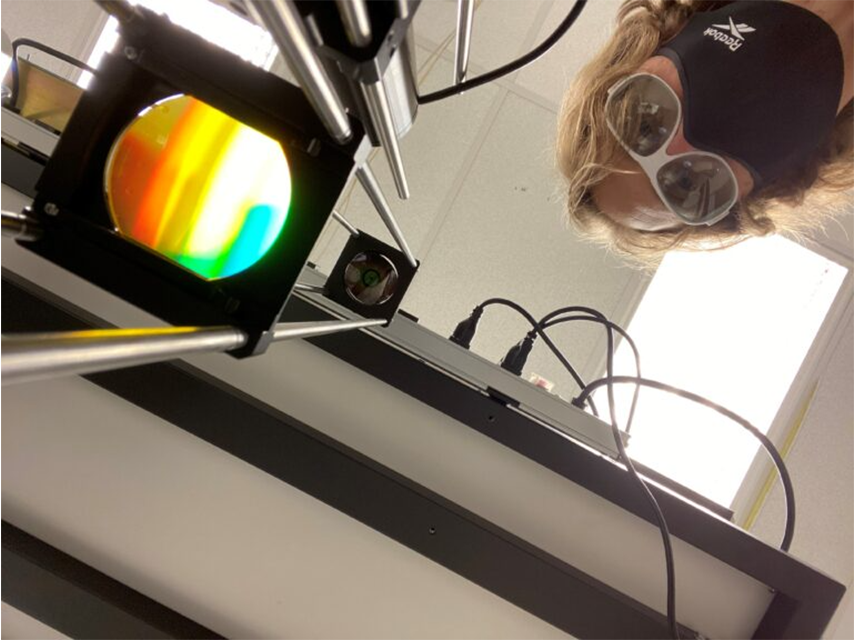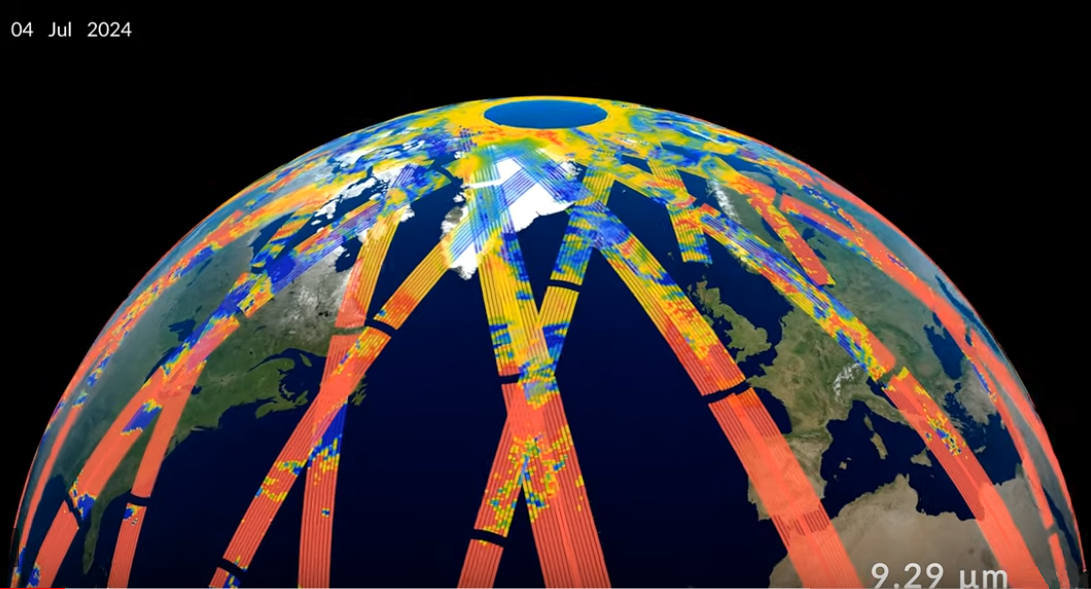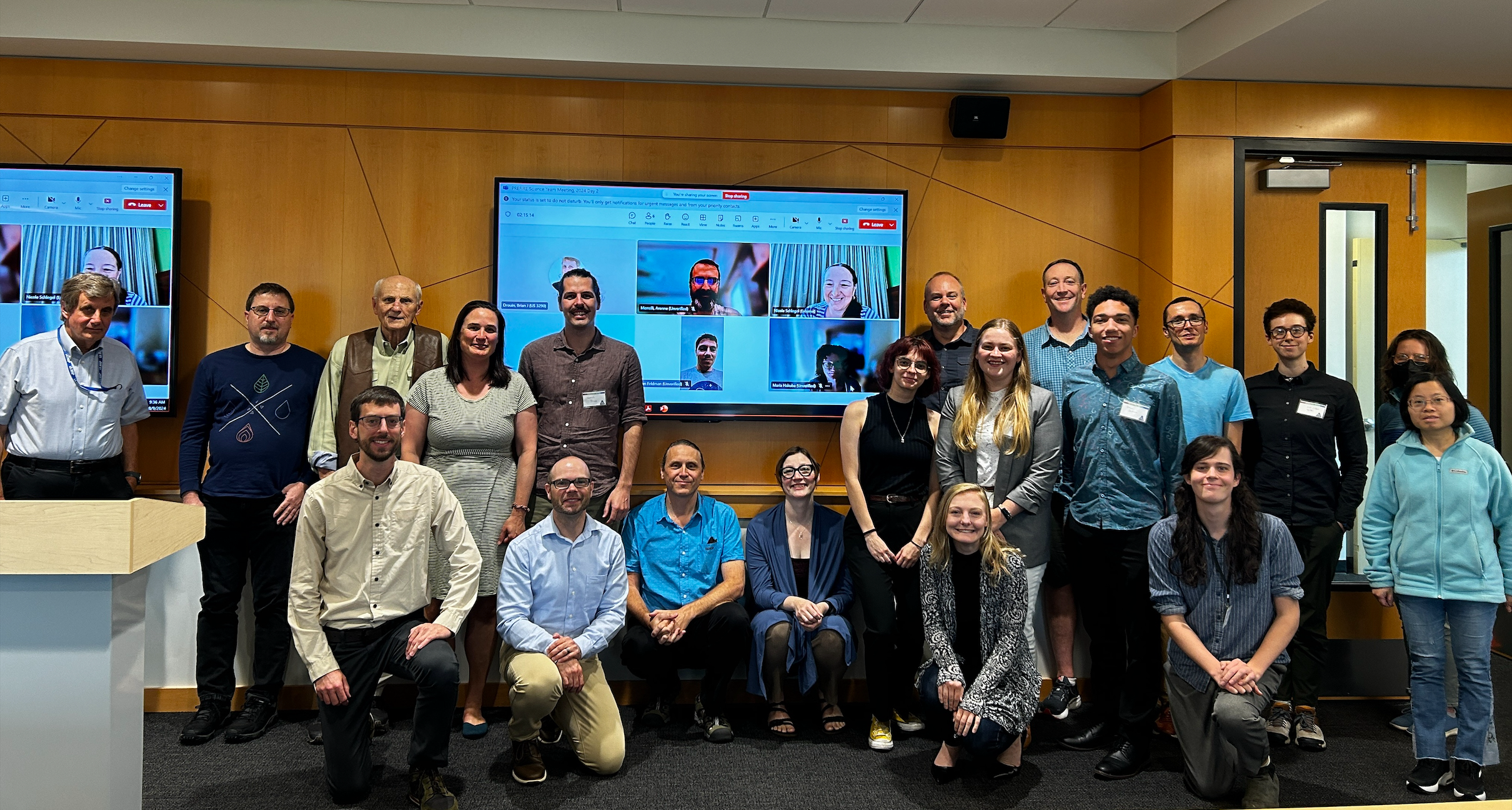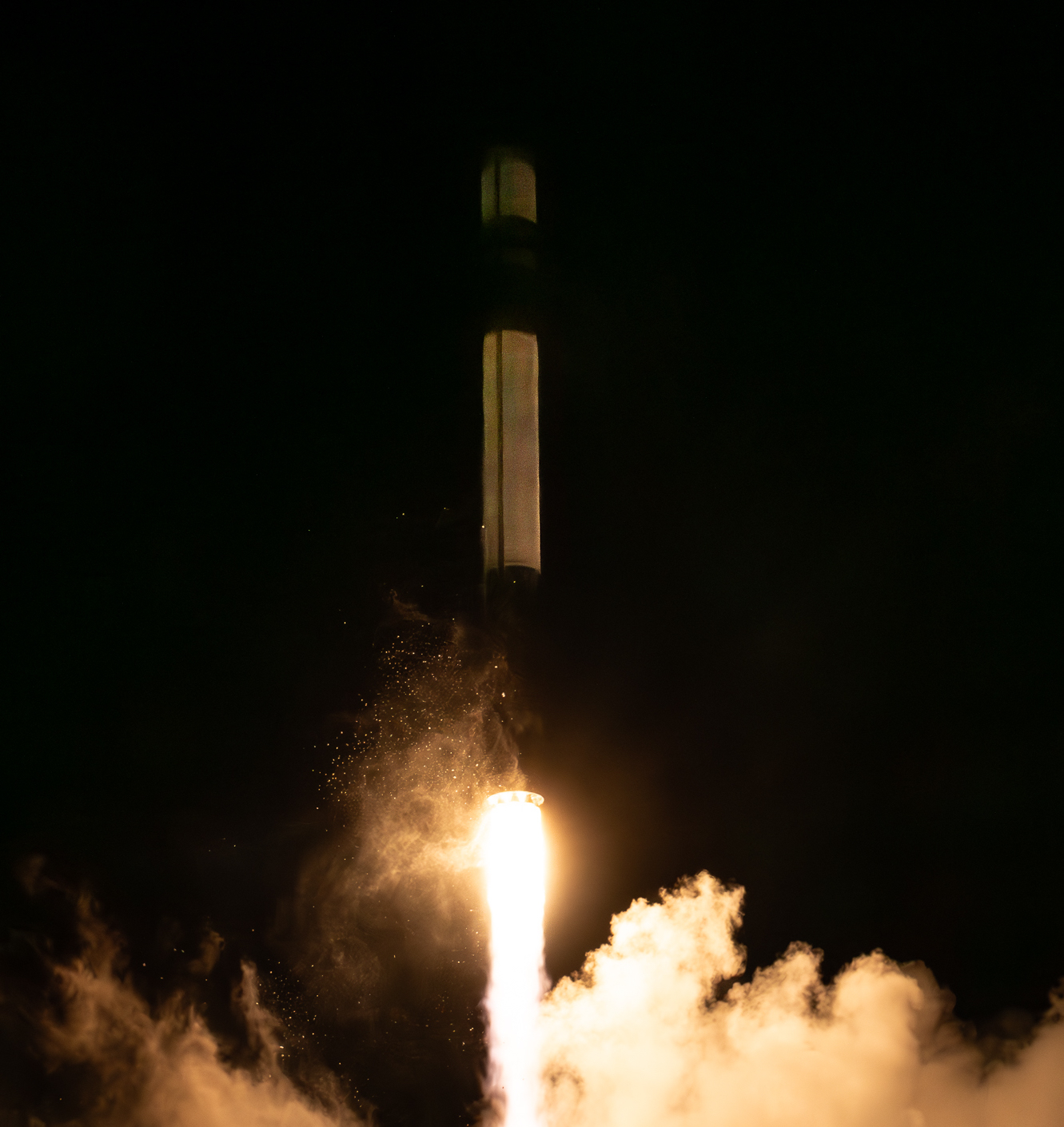Published on 26 Jan 2022 | Callyn Bloch
 Brian Drouin, NASA JPL scientist and deputy principal investigator for PREFIRE, working on laser hardware for TIRS testing. This instrument must fit in a CubeSat the size of a toaster. Credit: Brian Drouin
Brian Drouin, NASA JPL scientist and deputy principal investigator for PREFIRE, working on laser hardware for TIRS testing. This instrument must fit in a CubeSat the size of a toaster. Credit: Brian Drouin
Click here to read the original article.
Using miniaturized satellites called CubeSats – or nanosatellites – a new NASA mission is poised to gather missing data in the far infrared to help scientists better understand how the polar regions regulate Earth’s temperature and climate.
The Polar Radiant Energy in the Far InfraRed Experiment led by Tristan L’Ecuyer at the University of Wisconsin-Madison Space Science and Engineering Center, will launch a pair of CubeSats in 2023. Each one, the size of a toaster, will house a Thermal InfraRed Spectrometer, or TIRS, to measure emissivities at frequencies spanning the far-IR wavelengths. “This collaboration with NASA’s Jet Propulsion Laboratory is bringing experimental technologies that push the boundaries of miniaturization to the research environment,” says L’Ecuyer. “Like most new technology, parts have become smaller and more capable as they have been refined over time allowing exciting new measurements to be made at a fraction of the cost of previous missions.”
Emergence of CubeSats for research
The first CubeSats were built in 1999 for student projects at California Polytechnic State University and Stanford University. They were designed to provide students hands-on experience with building satellites as well as opportunities to ask, and answer, research questions that involved observations from space. The short development period of five to six years allowed them to complete a CubeSat project in the timespan of a Ph.D. program.
Until the early 2010s, CubeSats continued to be used for academic and experiential learning in middle schools, high schools and universities. However, the technology has proven itself for a variety of targeted purposes including facilitating communications, collecting earth observations and exploring space and has been adopted by private companies and government organizations like NASA.
NASA launched CubeSats on a rocket designed specifically for small payloads for the first time on Dec. 17, 2018 from New Zealand with 10 of the miniature satellites. This type of launch is expected to become more frequent as nanosatellites increase in popularity.
Sharmila Padmanabhan, an engineer at JPL in Southern California leading the PREFIRE TIRS team, has experience working on both traditional bus-sized satellite missions as well as CubeSat missions. “CubeSats provide easy and inexpensive access to space,” she says. “They are a great way to test out new technologies.”
CubeSat missions cost about one-tenth of a traditional satellite mission and can be completed in about five years in contrast to the 15-year window for larger missions. The smaller price tag allows scientists to take more risks with project choices and design and thereby create more opportunities for experimentation to explore focused science questions. Due to the compressed schedule of CubeSat development, scientists have the opportunity to work on multiple smaller missions from start to finish throughout their careers rather than devoting an entire career to one mission that may or may not be realized.
“By using CubeSats, we are revolutionizing riskier experiments in space,” says Brian Drouin, JPL scientist and deputy principal investigator for PREFIRE. “With these risks, we gain new discovery potential.”
Larger, full-size satellites are built to last up to a decade or more in space and include backup instruments as well as fail-safe measures in case problems arise. CubeSats; however, allow for more risks and creativity in implementing the technology because of their low cost and limited life, says Padmanabhan. CubeSat project teams must adhere to a tight schedule, be able to think on the fly and be willing to venture outside standard operating procedures in order to complete tasks, which goes against the grain of a traditional build.
Because of its compact design, there is little space onboard a CubeSat and every inch is utilized. In addition, there are no backup instruments or quick fixes if something goes wrong. To address this issue, projects often include a constellation of CubeSats so that if one satellite breaks, there will be a backup. The PREFIRE mission utilizes two satellites to ensure that basic science observations will be gathered. Inclusion of a second satellite also provides better temporal coverage of the polar regions that the mission might not realize if it were limited to one satellite.
Getting to space
The road to launch for CubeSats is much different than a standard satellite. Because they are small and lightweight, CubeSats are often launched with bigger missions in a rideshare arrangement.
At times; however, limited space or budget cuts may result in reductions to the instrument payload of larger missions. It is this scenario that highlights the advantages of the CubeSat design: it allows scientists to explore smaller, more specific science ideas with smaller instruments that may have been removed from a larger mission.
This was the case for the PREFIRE technology. In 2007, a far-IR instrument was cut from a large mission due to budget constraints. Scientists like Drouin saw an opportunity. The PREFIRE mission was born from the idea that basic far-IR measurements were untapped science and could be custom fit for a CubeSat mission.
“It’s like taking a survey of the science we didn’t have before,” says Drouin.
While it took two attempts to craft a winning proposal, L’Ecuyer joined the science team to help streamline – and focus – the PREFIRE objectives to a couple of specific questions that could be answered within the short mission timeframe. NASA selected the mission for funding.
The two PREFIRE mission CubeSats will measure just 30 centimeters-by-20 centimeters-by-10 centimeters, approximately the size of a toaster. The available space is segmented into six units with the TIRS instrument occupying four of them. To accomplish the difficult task of fitting the instrument into this small space, Padmanabhan and other engineers set out to scale down the technology while retaining its function.
Typically, instruments onboard CubeSats are miniaturized versions of instruments designed for larger missions. “The most challenging part of designing the CubeSat is miniaturizing the technology,” Padmanabhan explains. “The instruments need to be as tiny as possible.”
The TIRS instrument for PREFIRE is designed to measure the complete spectrum of thermal radiation at the Earth’s poles. This radiation is between 4-54 micrometers in wavelength and the far-IR range beyond 15 micrometers has not been measured previously, leaving a gap in climate research that the PREFIRE mission aims to fill.
While engineers have developed instruments to measure far-IR radiation in space, the technology was applied to large, expensive planetary science missions. In addition, the instruments required an extremely cold environment to function. To solve this problem, the PREFIRE engineering team found a cheaper way to measure this energy by using a thermocouple to create a voltage that can be converted into a temperature reading, similar to the temperature sensors in thermostats in most homes and buildings. This technology is less sensitive than the more expensive instrument, but works well at ambient temperatures and is perfect for measuring the far-IR radiation at the poles where strong signal changes occur.
The PREFIRE engineers created multiple models of the CubeSats and TIRS instrument, each a refinement on the previous one. They were aiming to achieve a design that would function properly in such a small vehicle. Drouin explains that the different iterations and improvements in each model help ensure reliability for the mission.
“It’s challenging engineering, but it’s very satisfying once you get it working,” says Padmanabhan. “The measurements from the TIRS are important science measurements that haven’t been measured in the past.”
The PREFIRE science team and engineers are excited about the unique capabilities of the mission and the possibilities of new scientific discoveries from the data. Both Drouin and Padmanabhan love working with such a talented group of people to discover new science with these small satellites.
“We are just barely scratching the surface of what these instruments can do,” Drouin says. “CubeSats are vital for moving science forward and making new discoveries.”
This research is supported by NASA
References
Jackson, S. (2017, February 17). NASA’s CubeSat launch initiative. NASA. Retrieved October 23, 2021, from https://www.nasa.gov/directorates/heo/home/CubeSats_initiative.
L’Ecuyer, T. S., Drouin, B. J., Anheuser, J., Grames, M., Henderson, D., Huang, X., … & Xie, Y. (2021). The Polar Radiant Energy in the Far InfraRed Experiment: A New Perspective on Polar Longwave Energy Exchanges. Bulletin of the American Meteorological Society, 1-46.
NASA. (2019, February 5). 10 things: CubeSats – going farther – NASA solar system exploration. NASA. Retrieved October 23, 2021, from https://solarsystem.nasa.gov/news/834/10-things-cubesats-going-farther/.
Potter, S. (2018, December 17). NASA sends CubeSats to space on first dedicated launch with Rocket Lab. NASA. Retrieved October 23, 2021, from https://www.nasa.gov/press-release/nasa-sends-cubesats-to-space-on-first-dedicated-launch-with-us-partner-rocket-lab.
- PREFIRE First Light Announcement!
- 2024 PREFIRE Science Team Meeting
- Second PREFIRE Satellite Launched!
- Update on second PREFIRE CubeSat launch
- First PREFIRE Satellite Launched!
- Rocket assembly pics and PI radio interview
- Launch update and a new short video!
- NASA's tiny twin polar satellites (first launch soon)
- Names for the PREFIRE Launches!
- Pre-launch anticipation of PREFIRE CubeSat science
Recent Posts

NASA has publicly released the first look at PREFIRE mission data, also known as the first light announcement! The PREFIRE science team worked with NASA’s Scientific Visualization Studio to create a first light video. It showcases some of the fascinating infrared details of the Arctic surface and atmosphere that PREFIRE-SAT2 captured in July 2024. The PREFIRE science team is hard at work analyzing the countless measurements that the twin CubeSats are radioing to the ground every day.
Read more
The 2024 PREFIRE Science Team Meeting was held at the University of Colorado on August 8th and 9th. The PREFIRE team, led by Tristan L'Ecuyer (PI) discussed the status of the PREFIRE CubeSats and instruments, the Science Data Processing System (SDPS), and preliminary data output, as well as the nuances and considerations of this unique dataset. The team also discussed potential validation activities and heard from several external scientists about related projects with the potential for both collaboration and validation.
Read more
Rocket Lab successfully launched the second of two PREFIRE satellites from Mahia, New Zealand at 3:15 pm NZST (3:15 am UTC).
Read more
Rocket Lab has scheduled the second attempt at the #2 (and final) PREFIRE launch for June 5, 2024 at 03:13 am UTC! That is June 04, 2024 at 10:13 pm Central time in North America. Also, here is the official patch of the 49th Rocket Lab launch, PREFIRE and Ice. It depicts the kickstage (3rd stage) of an Electron rocket with a satellite on top, a polar bear on a chunk of polar ice, and a starry sky.
Read more
Rocket Lab successfully launched the first of two PREFIRE satellites from Mahia, New Zealand at 7:41 pm NZST (7:41 am UTC).
Read more